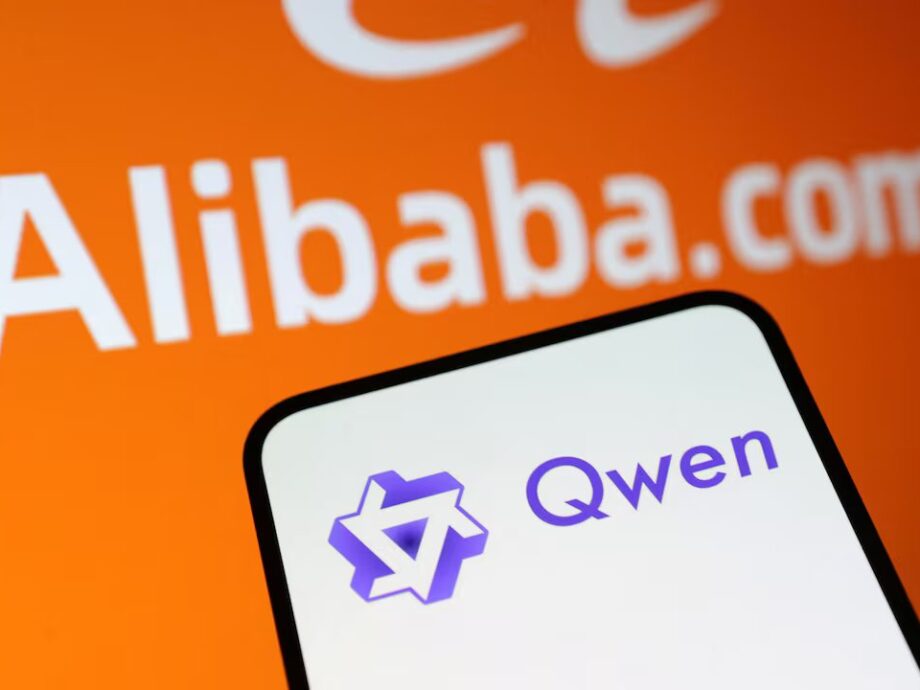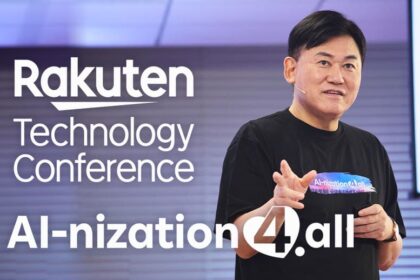A new open source contender in multimodal AI
Alibaba has introduced Qwen3 Omni, a broad multimodal model that can read text, look at images, listen to audio, and watch video. It responds in text and in natural speech. The company positions it as a native end to end omni model. That means the model was designed from day one to handle all of those inputs together, instead of treating speech or vision as bolt on extras. It arrives as many organizations weigh the cost and control tradeoffs between open source models and proprietary systems such as GPT 4o and Gemini 2.5 Pro. The headline difference is access. Qwen3 Omni is released under the Apache 2.0 license, a permissive framework that allows free commercial use, modification, and redistribution. That lowers the barrier for teams that want to self host or ship products without per seat fees or vendor lock in.
- A new open source contender in multimodal AI
- What makes Qwen3 Omni different
- Inside the Thinker and Talker architecture
- How it was built and what it supports
- Benchmarks, strengths, and how to read the claims
- How it compares to GPT 4o, Gemini 2.5 Pro, and Gemma 3n
- Access, pricing, and free quota
- Use cases, from support desks to media tools
- Licensing and enterprise impact
- Risks, safeguards, and what to evaluate next
- Key Points
Qwen3 Omni also pushes beyond the typical triad of text, image, and audio. It can analyze video too, which has been limited mainly to closed platforms. The model supports 119 languages for text, 19 for speech input, and 10 for speech output, covering major languages and some dialects such as Cantonese. Early materials highlight streaming responsiveness that feels conversational rather than batch oriented, with first packet audio in roughly a quarter of a second and video in roughly half a second. That is an important threshold for assistants that interrupt, clarify, and hand off quickly in real time settings such as support calls or mobile guides.
The release includes three variants tuned for different jobs. Instruct is the full featured conversational model, Thinking focuses on complex reasoning and long chains of thought with text outputs, and Captioner specializes in audio captioning where low hallucination rates matter. Developers can access weights on popular model hubs, run an API with a faster Flash option, or fine tune for domain control and style. Benchmarks reported by the company show strong results in speech, audio, and video tasks while keeping text and vision performance competitive with leading systems.
What makes Qwen3 Omni different
Several technical choices set Qwen3 Omni apart. First, its training pipeline mixes unimodal and cross modal data from the beginning, then keeps scaling during pretraining and post training. Second, the model uses a Mixture of Experts architecture that activates a small subset of parameters for each token. This can improve throughput and reduce inference costs, which is important for real time applications and for deployment under hardware constraints. Third, the system separates reasoning and speech into two coordinated components called Thinker and Talker. Thinker does the heavy lifting on multimodal comprehension and reasoning. Talker converts high level representations into speech that preserves timing and character.
Three model variants for distinct needs
Alibaba Cloud released three options under the Qwen3 Omni 30B A3B family so teams can pick the right fit:
- Instruct, which combines Thinker and Talker for text, image, audio, and video inputs with both text and speech outputs.
- Thinking, which focuses on deep reasoning and long chains of thought, accepts the same multimodal inputs, and outputs text only.
- Captioner, which targets audio captioning and descriptions with low hallucination, helpful for media analysis, accessibility, and content moderation workflows.
The API adds a Flash variant aimed at lower latency and higher concurrency. That can matter if you are building a call center assistant or a shopping guide that needs to handle spikes in traffic without delaying answers.
Inside the Thinker and Talker architecture
Qwen3 Omni splits responsibilities to keep speech natural while keeping reasoning flexible. Thinker is the core multimodal model. It aligns and fuses text, image, audio, and video features, then produces token level representations that drive the response. Talker is a dedicated speech generator. Instead of consuming Thinker output as text, it conditions directly on audio and visual features. That design helps Talker align prosody and timbre with what it sees and hears, which improves translation and voice acting traits such as pacing, emphasis, and emotional tone.
To reduce speech latency, Talker uses a multi codebook autoregressive scheme that predicts discrete acoustic tokens, then a lightweight Code2Wav convolutional network turns those tokens into waveforms. Because Talker is decoupled from Thinker text, external modules can influence or filter Thinker outputs before speech rendering. That makes safety workflows more practical, since policy checks and retrieval steps can run between thinking and talking. Streaming performance is central. Company figures cite first packet audio around 234 milliseconds and first packet video around 547 milliseconds. The system remains below one real time factor, which means it can generate audio faster than its playback length, even when handling multiple requests.
The architecture uses Mixture of Experts for both Thinker and Talker. In Mixture of Experts, the model consists of many small expert networks and a gating network routes each token to a few of them. Only a small slice of parameters runs per token, which supports high concurrency and helps keep inference responsive. For developers, this can mean the difference between an assistant that interrupts and interacts, and a bot that waits for a turn to speak.
How it was built and what it supports
Audio performance starts with the encoder. Qwen3 Omni introduces an Audio Transformer, built from scratch and trained on roughly 20 million hours of supervised data. The training mix contains mostly Chinese and English automatic speech recognition data, with additional data from other languages and tasks centered on audio understanding. The encoder holds about 600 million parameters, supports streaming caches for low latency, and can run offline for analysis tasks such as long recordings. That encoder feeds the multimodal core through alignment stages so the model can reason across formats.
Pretraining followed three stages. In encoder alignment, vision and audio encoders were trained and aligned while the language model was kept frozen. In general training, the team scaled to roughly 2 trillion tokens that include text, audio, images, and some video and audio video pairs. In long context training, the maximum token length expanded from 8,192 to 32,768 while incorporating more long audio and video sequences. Post training included supervised fine tuning, distillation from stronger teachers, and policy optimization using both rules and model judgments for Thinker. Talker underwent a four stage regimen that used hundreds of millions of multimodal speech samples combined with continual pretraining, aimed at lowering hallucination and improving voice quality.
Capabilities and limits are broad for a 30 billion parameter family. Qwen3 Omni supports 119 languages in text, 19 for speech input, and 10 for speech output. Thinking Mode allows a context window of 65,536 tokens, Non Thinking Mode supports 49,152 tokens, and the model supports up to 16,384 tokens for input and 16,384 tokens for output. The longest chain of thought can reach 32,768 tokens. That scale helps with complex transcripts, long meetings, or code bases and documents that would exceed other models without chunking.
Benchmarks, strengths, and how to read the claims
Across a wide set of 36 benchmarks, Alibaba reports that Qwen3 Omni scores at the top on 22 and is the leader among open source models on 32. Text and reasoning results include a 65.0 on AIME25, far higher than the figure disclosed for GPT 4o at 26.7, and a 76.0 on ZebraLogic, above the number published for Gemini 2.5 Flash at 57.9. WritingBench shows 82.6, compared with 75.5 for GPT 4o. On speech and audio, Word Error Rates on Wenetspeech are 4.69 and 5.89 against two common test splits, well ahead of the 15.30 and 32.27 reported for GPT 4o. Librispeech other falls to 2.48 WER, which is low among peers.
Image and vision results include 59.7 on HallusionBench, 57.0 on MMMU pro, and 56.3 on MathVision full, each above GPT 4o in the company report. For video understanding, the model reaches 75.2 on MLVU, passing the figures given for Gemini 2.0 Flash at 71.0 and GPT 4o at 64.6. Music tasks show gains too, with 93.0 on GTZAN and 52.0 on RUL MuchoMusic. The picture painted by these numbers is consistent with the design focus. Qwen3 Omni sets a high bar for audio and audio visual understanding, while maintaining strong text and image skills.
Benchmarks are helpful, yet they are still controlled tests. Data sets and scoring can favor certain training mixes. Real deployments expose new stresses such as noisy microphones, accents, messy phone cameras, and rapid context switching. Multimodal models also face a common tradeoff. Training for breadth across modalities can sap a small amount of text only performance compared with larger, text first models. Teams should run focused pilots on their own data, then choose a mixed model strategy if needed. Many enterprises pair a smaller multimodal model that listens and looks with a larger text model that drafts reports or emails. The open Apache license makes that kind of orchestration easier without procurement friction.
How it compares to GPT 4o, Gemini 2.5 Pro, and Gemma 3n
OpenAI set expectations with GPT 4o, which unified text, image, and audio with tight coupling and natural speech. Qwen3 Omni adds video analysis to the input list. Google has delivered video analysis in Gemini 2.5 Pro, yet it remains proprietary. Google also offers Gemma 3n as an open model, and it accepts text, image, audio, and video inputs, but it outputs text only. Qwen3 Omni outputs text and speech, which changes the range of interactive uses such as live translation or agent handoffs in call centers.
Another point of separation is licensing. Qwen3 Omni is published under Apache 2.0 with a patent license, which allows companies to use, modify, and ship products without forcing them to disclose source or pay runtime fees. Closed models require paid access and lock usage to a provider platform. There is a common nuance with modern open releases. Weights and usage code are open, while the full recipe to rebuild from scratch, including curated training data, is not usually public. For many adopters, the ability to run the model, fine tune it, and integrate it in production is the main goal, and that is granted here.
Latency is competitive. Alibaba lists first packet audio around 234 milliseconds and video around 547 milliseconds. That is in the same class as the best conversational systems. Companies must evaluate service level objectives beyond first packet timings, including time to stable content and total response time for long answers. Qwen3 Omni also brings an API Flash variant for even faster response, similar in spirit to speed focused tiers in other ecosystems.
Access, pricing, and free quota
Developers can try Qwen3 Omni in several ways. The weights are available on major model hubs. The API offers on demand access with a free quota of one million tokens across modalities for 90 days after activation. Pricing is per one thousand tokens. Text input costs 0.00025 dollars. Audio input costs 0.00221 dollars. Image and video input costs 0.00046 dollars. Text output costs 0.00096 dollars per one thousand tokens when inputs are text only, or 0.00178 dollars when inputs include image or audio. If you request text plus audio output, the audio portion costs 0.00876 dollars per one thousand tokens and the text portion is free.
These numbers are low compared with many closed offerings, which supports experiments without high bills. Pricing for Thinking Mode and Non Thinking Mode is the same, according to the company. Audio output is limited to Non Thinking Mode. The platform also lists context limits and model options inside Model Studio, where companies can select models by speed, quality, and cost. Official details are available on Alibaba Cloud Model Studio pages at this link.
Use cases, from support desks to media tools
Qwen3 Omni is intended for jobs where seeing, listening, and speaking make a difference. A few examples illustrate the range:
- Live technical support. An assistant can watch a phone camera feed while listening to a customer, then give step by step guidance with a natural voice.
- Multilingual transcription and translation. The model transcribes meetings, calls, or lectures in multiple languages, then produces an English summary or speaks answers back in another language.
- Audio captioning and music tagging. The Captioner variant writes low hallucination descriptions of audio, including background sounds and music traits, useful for search and rights management.
- Video understanding. The model can answer questions about what happened in a clip, track events, and summarize scenes.
- OCR and document intake. Coupling vision with language helps extract fields from forms or receipts, then validate them in context.
- Consumer assistants. Wearables or phones can use the model for menu translation, landmark identification, and accessibility features such as describing surroundings.
Developers can fine tune conversation style and persona through system prompts. Tool use is supported so the model can call external services for retrieval, calculations, or database lookups. That enables agent style patterns, where the model plans, calls tools, and reports back in speech.
Licensing and enterprise impact
Apache 2.0 licensing is a major part of the story. It permits commercial use, modification, and redistribution and includes a patent license that reduces legal risk when integrating the model into proprietary systems. Enterprises can embed Qwen3 Omni into products or internal workflows without vendor fees, and they do not have to open source their changes. That is attractive for regulated sectors where control over data routing and logging is required. Open weights also allow on premises deployment or hosting in a trusted cloud.
Open release does not automatically solve every concern. Training data and the full training code are not typically included, which means the community cannot reproduce the entire build. For many businesses, that is acceptable, since the focus is on running the model, customizing it, and meeting service level goals. The release strengthens the case for multi model stacks. Teams can combine a fast open multimodal model with a larger proprietary model where that makes sense, or keep everything open to avoid platform constraints. Either way, the availability of a video aware, speech capable model under a permissive license expands what can be built without long negotiations.
Risks, safeguards, and what to evaluate next
Multimodal models raise security and safety questions that go beyond text. Audio and video inputs can carry sensitive information. Speech output can mislead if not grounded or filtered. Alibaba details a gating step where external modules can intercept Thinker outputs before speech rendering by Talker. That design supports policy checks, retrieval, or red team filters. Enterprises should still validate content safety in their own environment and region, including prompt injection defenses, privacy controls, and consent for recording or analysis.
Performance claims should be tested against real data. Accents, domain jargon, and background noise can degrade automatic speech recognition quality. Low light or motion blur can degrade vision understanding. Tool use and agent orchestration introduce new failure modes, such as incorrect tool calls or looping. Governance policies are needed for logging, human review, and rollback. Finally, infrastructure matters. Running real time speech at scale requires careful planning for throughput, GPU memory, and load shedding. Mixture of Experts helps with efficiency, yet teams must size clusters and caches for bursts and for long contexts.
Key Points
- Alibaba released Qwen3 Omni as an open model under Apache 2.0, with text and speech outputs and inputs across text, images, audio, and video.
- The system uses a Thinker and Talker design with Mixture of Experts for concurrency and low latency streaming speech.
- Reported first packet latencies are about 234 milliseconds for audio and about 547 milliseconds for video, under one real time factor.
- Three variants are available, Instruct for full interaction, Thinking for deep reasoning with text, and Captioner for audio captioning.
- Training includes a custom Audio Transformer trained on roughly 20 million hours and a multimodal corpus around 2 trillion tokens.
- On company reported benchmarks, Qwen3 Omni leads on many audio, video, and reasoning tests while staying competitive in text and vision.
- Pricing is low per one thousand tokens, with a one million token free quota for 90 days via API, and weights are available for self hosting.
- Apache 2.0 licensing enables commercial use, modification, and redistribution with a patent grant, reducing vendor lock in.
- Enterprises should test safety, latency, and accuracy on real data, and plan for governance and infrastructure to support real time workloads.












